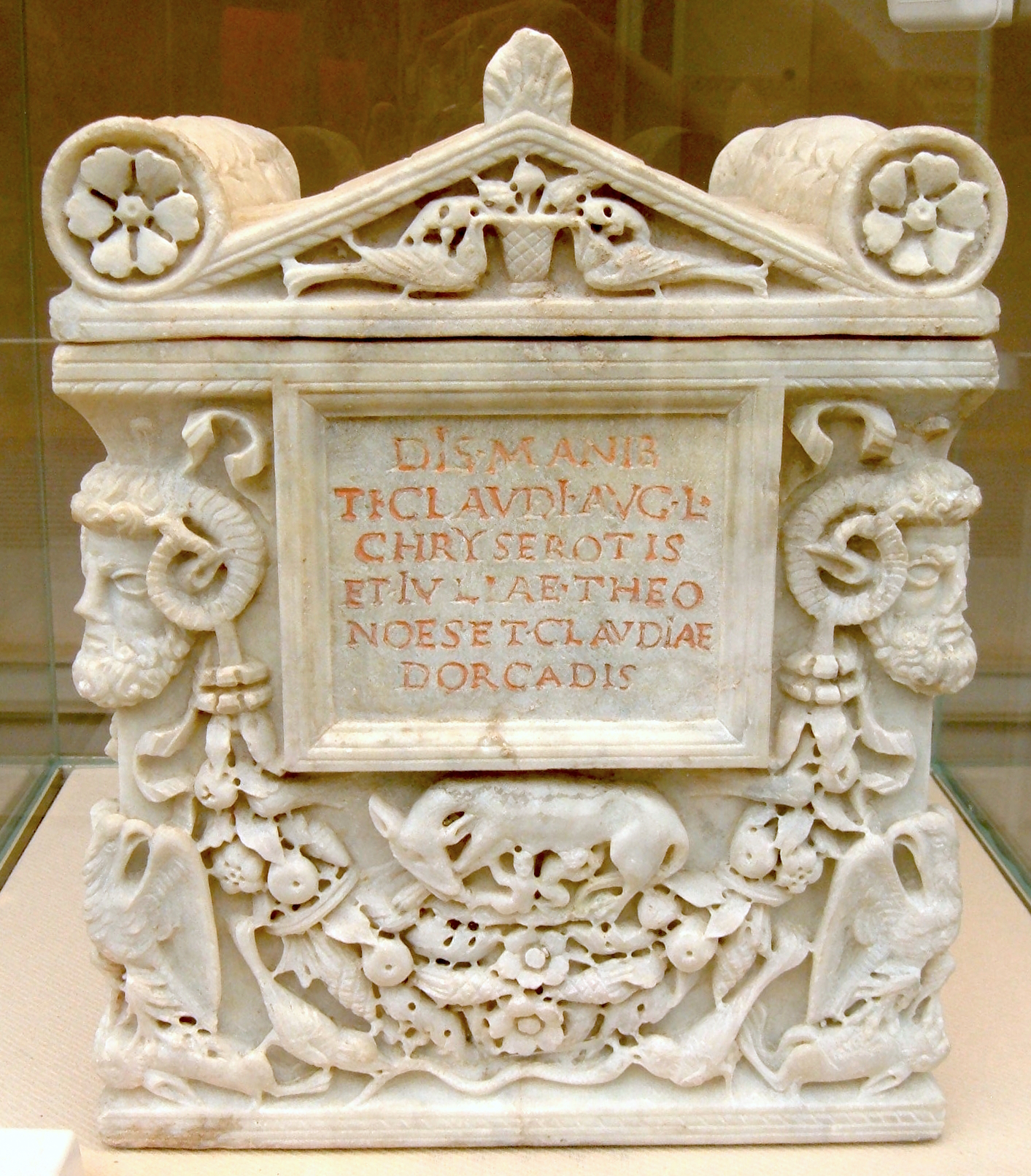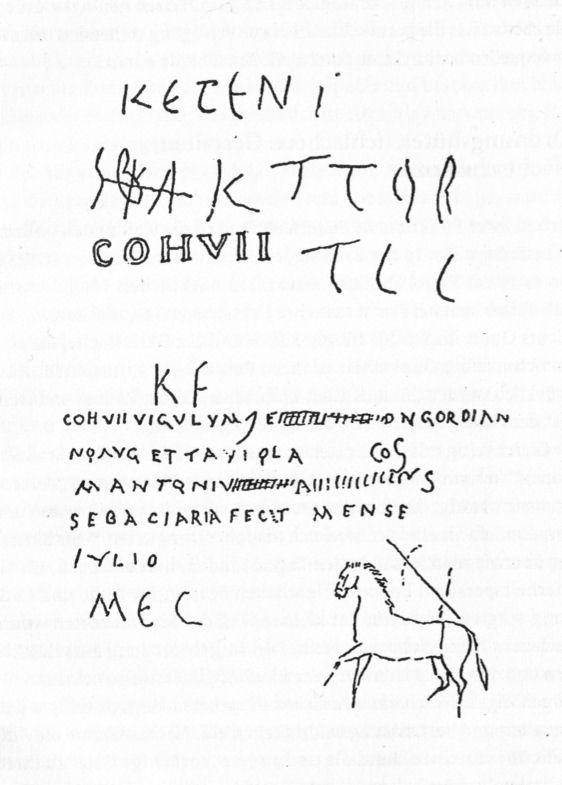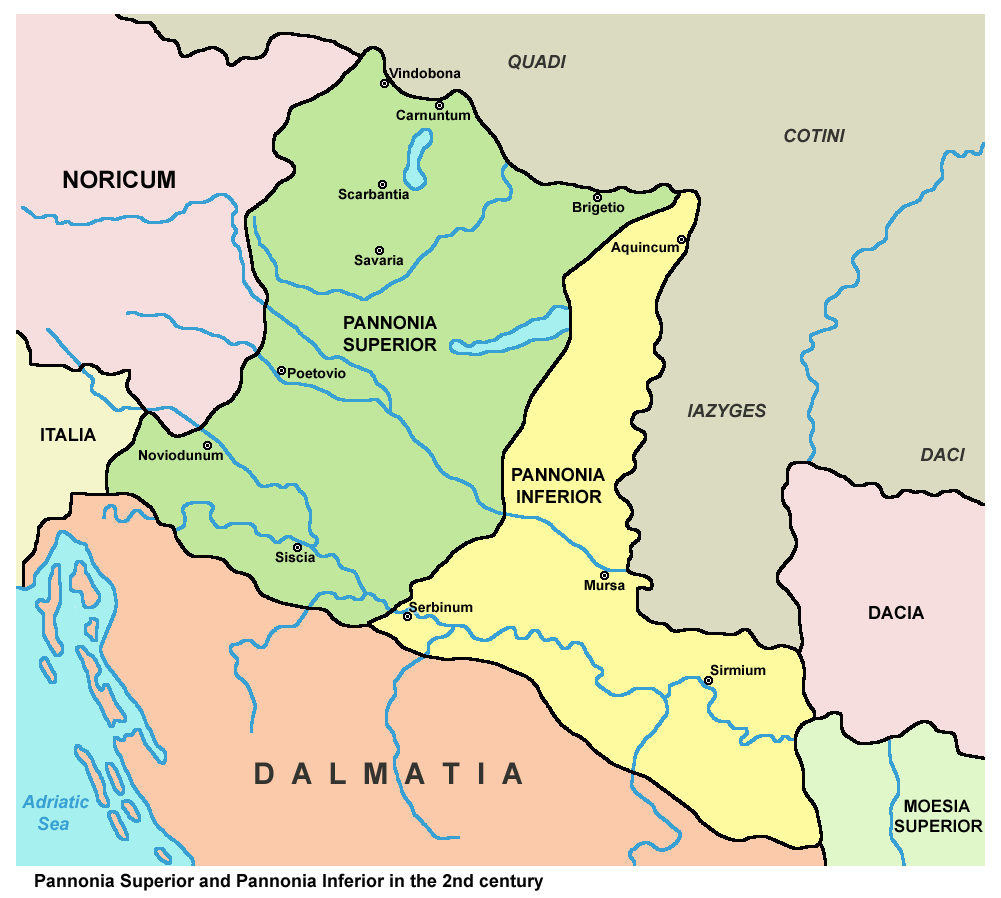|
Tittia Gens
The gens Tittia was an obscure plebeian family at ancient Rome. Few members of this gens appear in history, but Marcus Tittius Frugi attained the consulship in AD 80. A number of other Tittii are known from inscriptions. Origin Several of the earlier Tittii came from Casilinum in Campania, while others came from Atina in Latium, near the Campanian border. Praenomina The Tittii known from epigraphy used a number of common praenomina, chiefly '' Lucius'', ''Gaius'', ''Marcus'', and ''Quintus''. Besides these, a few Tittii bore other common names, including '' Gnaeus'' and ''Titus''. Members * Gaius Tittius C. f., one of the officials in charge of building walls for the temples of Jupiter Optimus Maximus and the Dioscuri at Casilinum in Campania in 108 and 106 BC. * Gaius Tittius C. l. Philargyrus, a freedman named in an inscription from Casilinum, dating from the latter half of the first century BC. * Quintus Tittius Q. f., the husband of Tittia, and father of Tittius Pont ... [...More Info...] [...Related Items...] OR: [Wikipedia] [Google] [Baidu] |
Plebeian
In ancient Rome, the plebeians (also called plebs) were the general body of free Roman citizens who were not patricians, as determined by the census, or in other words "commoners". Both classes were hereditary. Etymology The precise origins of the group and the term are unclear, but may be related to the Greek, ''plēthos'', meaning masses. In Latin, the word is a singular collective noun, and its genitive is . Plebeians were not a monolithic social class. Those who resided in the city and were part of the four urban tribes are sometimes called the , while those who lived in the country and were part of the 31 smaller rural tribes are sometimes differentiated by using the label . ( List of Roman tribes) In ancient Rome In the annalistic tradition of Livy and Dionysius, the distinction between patricians and plebeians was as old as Rome itself, instituted by Romulus' appointment of the first hundred senators, whose descendants became the patriciate. Modern hypotheses d ... [...More Info...] [...Related Items...] OR: [Wikipedia] [Google] [Baidu] |
Freedman
A freedman or freedwoman is a formerly enslaved person who has been released from slavery, usually by legal means. Historically, enslaved people were freed by manumission (granted freedom by their captor-owners), emancipation (granted freedom as part of a larger group), or self-purchase. A fugitive slave is a person who escaped enslavement by fleeing. Ancient Rome Rome differed from Greek city-states in allowing freed slaves to become plebeian citizens. The act of freeing a slave was called ''manumissio'', from ''manus'', "hand" (in the sense of holding or possessing something), and ''missio'', the act of releasing. After manumission, a slave who had belonged to a Roman citizen enjoyed not only passive freedom from ownership, but active political freedom ''(libertas)'', including the right to vote. A slave who had acquired ''libertas'' was known as a ''libertus'' ("freed person", feminine ''liberta'') in relation to his former master, who was called his or her patron ... [...More Info...] [...Related Items...] OR: [Wikipedia] [Google] [Baidu] |
Alpes Graiae
The Alpes Graiae et Poeninae, later known as Alpes Atrectianae et Poeninae (officially Alpes Atrectianae et Vallis Poenina), were a small Alpine province of the Roman Empire created after the merging of the ''Alpes Poeninae'' (or ''Vallis Poenina'') and the ''Alpes Graiae'' (or ''Alpes Atrectianae''), probably during the reign of Claudius (41–54 AD). Comprising the modern Canton of Valais (Switzerland), the Tarantaise Valley (France), and the Val d'Aosta (Italy), it was one of the three provinces straddling the Alps between modern France and Italy, along with the Alpes Maritimae and Alpes Cottiae. The province had two capitals, most likely since its creation: Forum Claudii Ceutronum (modern-day Aime-la-Plagne) for the Alpes Graiae, and Forum Claudii Vallensium (modern-day Martigny) for the Alpes Poeninae.'''' The procurator of the province resided alternatively in one of the two chief towns. Name The province was commonly called ''Alpes Graiae'', ''Alpes Atrectianae'', ''Al ... [...More Info...] [...Related Items...] OR: [Wikipedia] [Google] [Baidu] |
Axima
Aime (; frp, Éma) is a former commune in the Savoie ''département'' in the Auvergne-Rhône-Alpes region in south-eastern France. On 1 January 2016, it was merged into the new commune of Aime-la-Plagne. 17 November 2015 In 1972, the former communes of Longefoy, Tessens and Villette were merged with Aime. Geography The commune lies in the Tarentaise Valley, partly overlapping the s of and |
Puteoli
Pozzuoli (; ; ) is a city and ''comune'' of the Metropolitan City of Naples, in the Italian region of Campania. It is the main city of the Phlegrean Peninsula. History Pozzuoli began as the Greek colony of ''Dicaearchia'' ( el, Δικαιαρχία) founded in about 531 BC with the consent of nearby Cumae when refugees from Samos escaped from the tyranny of Polycrates. The Samnites occupied Dicaearchia in 421 BC after having conquered Cumae and may have changed its name to Fistelia. It enjoyed considerable political and commercial autonomy favoured by the excellent position of its port with the Campanian hinterland. The Roman occupation of Campania after the end of the 1st Samnite War from 341 BC marked the start of the Romanisation of the Greek-Samnite city. During the Second Punic War (218-201 BC), Rome experienced the strategic importance of the port of Puteoli and reinforced the defences and introduced a garrison to protect the town from Hannibal, who failed to cap ... [...More Info...] [...Related Items...] OR: [Wikipedia] [Google] [Baidu] |
Centuria
''Centuria'' (, plural ''centuriae'') is a Latin term (from the stem ''centum'' meaning one hundred) denoting military units originally consisting of 100 men. The size of the century changed over time, and from the first century BC through most of the imperial era the standard size of a centuria was 80 men. A ''centuria'' is also a Roman unit of land area corresponding to 100 '' heredia''. Roman use Political In the political context the ''centuria'' was the constituent voting unit in the assembly of the centuries (Latin '' comitia centuriata''), an old form of popular assembly in the Roman Republic, the members of which cast one collective vote. Its origin seems to be the homonymous military unit. The comitia centuriata elected important magistrates like consuls and praetors. Military History The ''centuria'' dates all the way back to the earliest armies of the Roman Kingdom being described in Plutarch's account of the life Romulus, however it is only mentioned in pas ... [...More Info...] [...Related Items...] OR: [Wikipedia] [Google] [Baidu] |
Vigiles
The ''Vigiles'' or more properly the ''Vigiles Urbani'' ("watchmen of the City") or ''Cohortes Vigilum'' (" cohorts of the watchmen") were the firefighters and police of ancient Rome. History The ''Triumviri Nocturni'' (meaning ''three men of the night'') were the first men, being privately owned slaves, organized into a group that combated the common problems of fire and conflagrations in Rome. The privately operated system became ineffective, so in the interest of keeping himself and Rome safe, Augustus instituted a new public firefighting force called the ''Vigiles''. Augustus modelled the new firefighters after the fire brigade of Alexandria, Egypt. The Vigiles were also known by their nickname ''Spartoli'' or "little bucket fellows" which was given to them because of the buckets they carried water in, which were made of rope sealed with pitch. In AD 6, Augustus levied a 4% tax on the sale of slaves and used the proceeds to set up the new force. The first Vigiles units w ... [...More Info...] [...Related Items...] OR: [Wikipedia] [Google] [Baidu] |
Ostia Antica
Ostia Antica ("Ancient Ostia") is a large archaeological site, close to the modern town of Ostia, that is the location of the harbour city of ancient Rome, 25 kilometres (15 miles) southwest of Rome. "Ostia" (plur. of "ostium") is a derivation of "os", the Latin word for "mouth". At the mouth of the River Tiber, Ostia was Rome's seaport, but due to silting the site now lies from the sea. The site is noted for the excellent preservation of its ancient buildings, magnificent frescoes and impressive mosaics. History Origins Ostia may have been Rome's first '' colonia''. According to legend, Ancus Marcius, the fourth king of Rome, was the first to destroy Ficana, an ancient town that was only from Rome and had a small harbour on the Tiber, and then proceeded with establishing the new colony further west and closer to the sea coast. An inscription seems to confirm the establishment of the old ''castrum'' of Ostia in the 7th century BC. The oldest archaeological remains so far ... [...More Info...] [...Related Items...] OR: [Wikipedia] [Google] [Baidu] |
Pannonia Superior
Pannonia Superior, lit. Upper Pannonia, was a province of the Roman Empire. Its capital was Carnuntum. It was one on the border provinces on the Danube. It was formed in the year 103 AD by Emperor Trajan who divided the former province of Pannonia into two parts: Pannonia Superior and Pannonia Inferior. The province included parts of present-day states of Austria, Croatia, Hungary, Slovakia, and Slovenia. History It was as governor of the province that Septimius Severus made his bid for the Roman Imperial throne in April 193 CE. In 308 Emperor Diocletian chaired a historic meeting with his co-emperors Maximian and Galerius in Carnuntum, to solve the rising tensions within the Tetrarchy. Diocletian and Maximian were both present on 11 November 308, to see Galerius appoint Licinius to be Augustus in place of Valerius Severus, who had died at the hands of Maxentius. Galerius ordered Maximian, who had attempted to return to power after his own retirement, to step down perman ... [...More Info...] [...Related Items...] OR: [Wikipedia] [Google] [Baidu] |
Pannonia Inferior
Pannonia Inferior, lit. Lower Pannonia, was a province of the Roman Empire. Its capital was Sirmium. It was one of the border provinces on the Danube. It was formed in the year 103 AD by Emperor Trajan who divided the former province of Pannonia into two parts: Pannonia Superior and Pannonia Inferior. The province included parts of present-day states of Hungary, Serbia, Croatia, and Bosnia and Herzegovina. The province was bordered to the east (across the Danube) by a Sarmatian tribe—the Iazyges. Later, the Vandals appeared to the north-east. Settlements Major settlements in Pannonia Inferior included: * ''Sirmium'' (Sremska Mitrovica) which several times served as an imperial residence for several emperors. * ''Aquincum'' (Buda), the provincial capital. * ''Cuccium'' (Ilok) * ''Cibalae'' (Vinkovci) * ''Mursa'' (Osijek) * ''Certissa'' (Đakovo) * ''Marsonia'' (Slavonski Brod) * ''Sopianae'' (Pécs) Aftermath and legacy The province was yet again split during the reign of the ... [...More Info...] [...Related Items...] OR: [Wikipedia] [Google] [Baidu] |
Aquincum
Aquincum (, ) was an ancient city, situated on the northeastern borders of the province of Pannonia within the Roman Empire. The ruins of the city can be found today in Budapest, the capital city of Hungary. It is believed that Marcus Aurelius wrote at least part of his book ''Meditations'' at Aquincum. History Aquincum was originally settled by the Eravisci, a Celtic tribe. Aquincum served as a military base (''castrum''), having been part of the Roman border protection system called '' limes''. Around AD 41–54, a 500-strong cavalry unit arrived, and a Roman legion of 6,000 men ( Legio II Adiutrix) was stationed here by AD 89. The city gradually grew around the fortress, and after Pannonia was reorganised by the Romans in AD 106, Aquincum became the capital city of the Roman province of Pannonia Inferior, holding that position until the administrative reform of Diocletian, more than a hundred years later. Under Hadrian, the city obtained municipal status, while under Sept ... [...More Info...] [...Related Items...] OR: [Wikipedia] [Google] [Baidu] |



_(5900530118).jpg)

